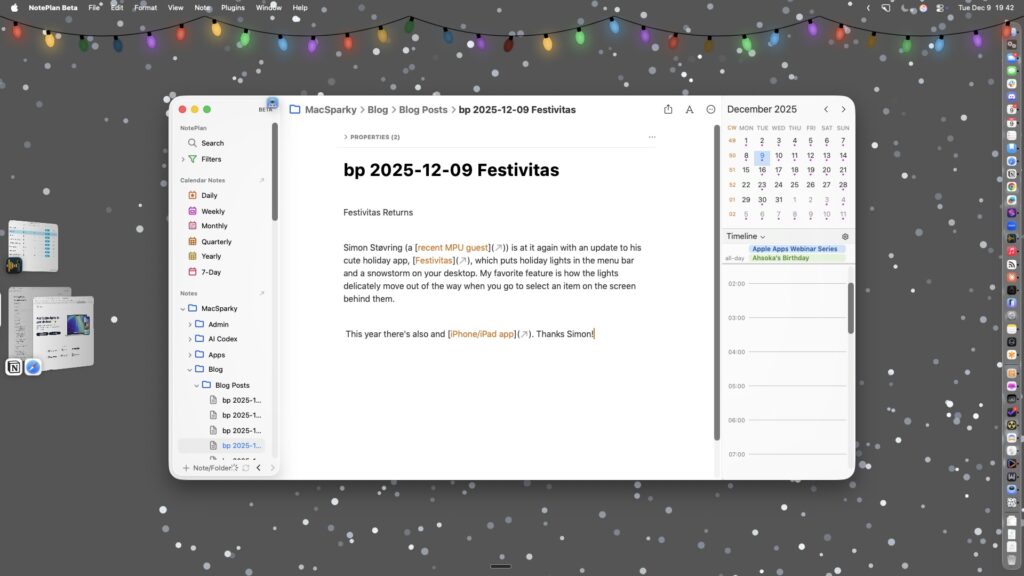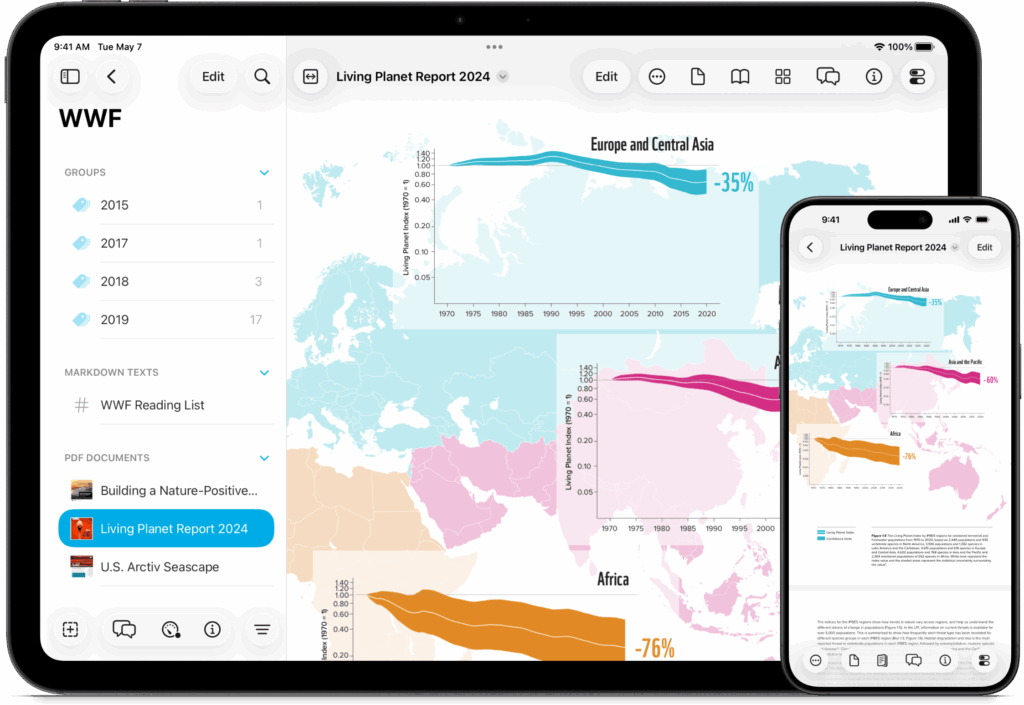I’m out at the pointy end of the stick again. This time, I’ve used a third-party MCP (Model Context Protocol) to connect Claude AI with OmniFocus. It’s actually quite useful for doing what I lovingly call “donkey work.”… This is a post for the MacSparky Labs Pathfinder and Insider members. Care to join? If you’re already a member, you can log in here.
Mac Power Users 828: Revisiting Keyboard Maestro
Join Stephen and me on this episode of Mac Power Users as we talk through our uses of Keyboard Maestro, diving deep into automation, text expansion, and more.
This episode of Mac Power Users is sponsored by:
- Squarespace: Save 10% off your first purchase of a website or domain using code MPU.
- DEVONthink: Get Organized — Unleash Your Creativity. Get 10% off.
- 1Password: Never forget a password again.
The Shop Time Experiment
For several years now, I’ve been getting back into woodworking. It’s a hobby I love, but through 2024, I kept running into the same problem: I never felt like I was getting enough time in the shop to actually make things.
During my regular reviews, I’d look at my role as a creative person and feel disappointed. I was talking about woodworking more than I was doing it. By the end of 2024, the gap between intention and action had grown so wide that I genuinely questioned whether I could still call myself a craftsman.
Looking back, I think my mistake was planning for specific projects instead of just getting time in the shop. I’d have a project in mind, but life would get in the way, the project would slip, and weeks would pass without me touching a tool.
Heading into 2025, I tried something different. Rather than plan specific projects, I committed to spending an hour in the shop every day. It didn’t matter what I did out there. Pushing a broom counted. Organizing a tool drawer counted. Actually building something counted. The only rule was one hour a day, away from work, being creative with my hands.
This experiment worked brilliantly.
Now I regularly spend time in the shop, and I look forward to it. Every day, one of my 24 hours goes to working with my hands. I find it personally satisfying, and it makes my other work better too. There’s something about stepping away from screens and into sawdust that resets my brain.


The experiment worked so well that I’ve expanded it. I now spend an hour a day on fitness, health, and exercise. Another hour goes to reading books and reflecting on what I read. That last one has let me dive back into the classics I enjoyed in college.
As we head toward the end of the year, I consider this one of the most successful experiments of 2025. It’s been a real improvement in my quality of life.
If you’re heading into a new year with something that’s got you stuck, maybe consider committing time to it rather than specific plans. Stop thinking about the project and start thinking about the practice. See how it works out for you.
Deep Dive – Year-End Tech Stack Audits
For the last Deep Dive of 2025 in the MacSparky Labs, several Pathfinder members and I got together to talk about our tech stack and the changes we’re thinking about for 2026.… This is a post for the MacSparky Labs Pathfinder members. Care to join? If you’re already a member, you can log in here.
Festivitas Returns

Simon Støvring (a recent MPU guest) is at it again with an update to his cute holiday app, Festivitas, which puts holiday lights in the menu bar and a snowstorm on your desktop. My favorite feature is how the lights delicately move out of the way when you go to select an item on the screen behind them.
This year there’s also and iPhone/iPad app. Thanks Simon!
The Mastermind Box Cover

McSweeney’s got to the bottom of that strange board game cover from my childhood.
The funny thing is, back before the internet, even before Coleco Football, Mastermind was my game of choice. And even as an eight-year-old, I remember thinking, “What the hell is up with this box picture?“
Email Linking Script Update (and Keyboard Maestro Script Execution)
I’ve been iterating on my script to grab a link from any email message from Mail and embed it somewhere else in your Mac. In this video, I share the latest version of the script along with a tutorial on how to connect it to Keyboard Maestro.
… This is a post for MacSparky Labs Members only. Care to join? If you’re already a member, you can log in here.
The Lab Report for December 19, 2025
The Lab Report is my weekly podcast exclusively for the MacSparky Labs members.
Would you like to join? If you’re already a member, you can log in here.
DEVONthink To Go 4

The DEVONthink team has been hard at work this year. Earlier this year, they released DEVONthink 4.0 Copernicus for the Mac, and now they have released DEVONthink To Go 4.0 Kepler for iPhone and iPad.
This is a major update, including features like Generative AI, custom metadata, versioning, and revision-proof databases. They’ve also improved search and smart groups.
I’ve got several DEVONthink databases that I’m constantly in. The area of greatest improvement in DEVONthink over the last several years has been the mobile experience. If you’re a DEVONthink user who hasn’t tried it for a while, you should.
Moreover, the Mac, iPad, and iPhone versions of DEVONthink now share a single license, making it easier than ever to use the mobile version. You can learn more here.
Getting Links to Apple Notes Using Keyboard Maestro
Here’s a great Keyboard Maestro Macro written by Jim Sauer and posted in the Keyboard Maestro forums. It lets you easily get deep links to notes in Apple Notes (provided they are stored on iCloud). Thanks to Jim for creating this excellent workflow… This is a post for the MacSparky Labs Pathfinder and Insider members. Care to join? If you’re already a member, you can log in here.

